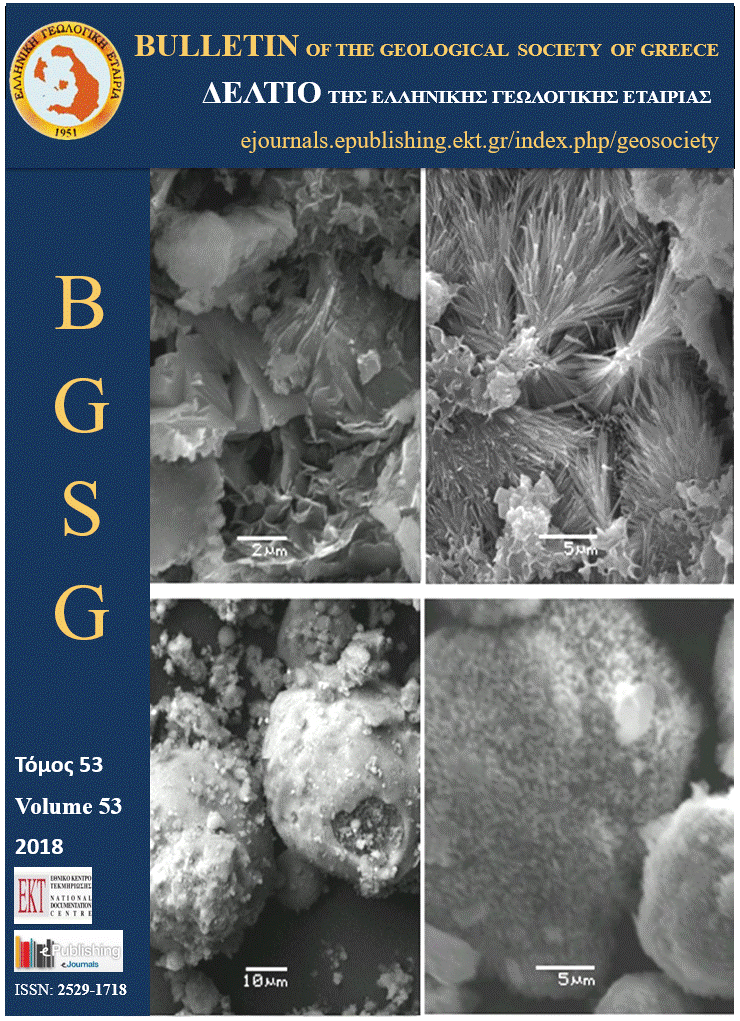Carbonate rocks originated from Central Peloponnese, Greece - Quality specifications for their use in gas desulfurisation at Megalopolis Thermo-Electrical station

Abstract
Greece holds significant amounts of lignite deposits, whose exploitation has been a major contributor to its energy development, to date. Lignite combustion produces gas pollutants, as by-products, which are emitted from the Thermo-Electrical Stations on daily basis and especially sulfur oxides, which can contribute to air pollution, if the appropriate preventive measures are not taken. Oxides’ capture is achieved using limestone, which is abundant in our country, provided that it fulfils certain standards. Therefore, it is deemed necessary to study the area surrounding the mineral deposit rocks, in order to create an excavation, the product of which is going to be used for the aforementioned purpose.
Article Details
- How to Cite
-
Seferli, S., & Valsamidis, T. (2018). Carbonate rocks originated from Central Peloponnese, Greece - Quality specifications for their use in gas desulfurisation at Megalopolis Thermo-Electrical station. Bulletin of the Geological Society of Greece, 53(1), 64–77. https://doi.org/10.12681/bgsg.18629
- Section
- Exploration and Exploitation of Mineral Resources

This work is licensed under a Creative Commons Attribution-NonCommercial 4.0 International License.
Authors who publish with this journal agree to the following terms:
Authors retain copyright and grant the journal right of first publication with the work simultaneously licensed under a Creative Commons Attribution Non-Commercial License that allows others to share the work with an acknowledgement of the work's authorship and initial publication in this journal.
Authors are able to enter into separate, additional contractual arrangements for the non-exclusive distribution of the journal's published version of the work (e.g. post it to an institutional repository or publish it in a book), with an acknowledgement of its initial publication in this journal. Authors are permitted and encouraged to post their work online (preferably in institutional repositories or on their website) prior to and during the submission process, as it can lead to productive exchanges, as well as earlier and greater citation of published work.


